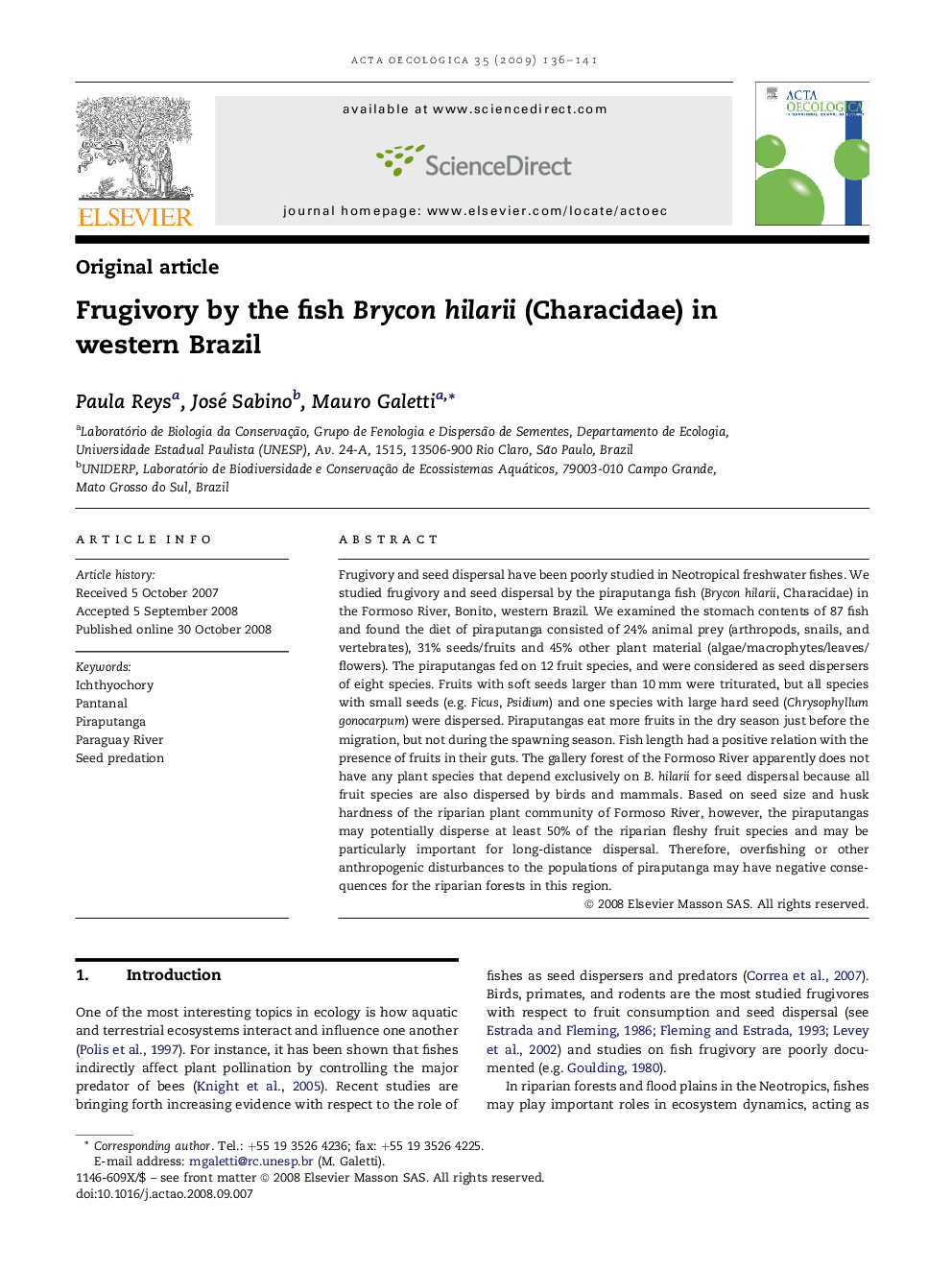| کد مقاله | کد نشریه | سال انتشار | مقاله انگلیسی | نسخه تمام متن |
|---|---|---|---|---|
| 4381395 | 1304069 | 2009 | 6 صفحه PDF | دانلود رایگان |

Frugivory and seed dispersal have been poorly studied in Neotropical freshwater fishes. We studied frugivory and seed dispersal by the piraputanga fish (Brycon hilarii, Characidae) in the Formoso River, Bonito, western Brazil. We examined the stomach contents of 87 fish and found the diet of piraputanga consisted of 24% animal prey (arthropods, snails, and vertebrates), 31% seeds/fruits and 45% other plant material (algae/macrophytes/leaves/flowers). The piraputangas fed on 12 fruit species, and were considered as seed dispersers of eight species. Fruits with soft seeds larger than 10 mm were triturated, but all species with small seeds (e.g. Ficus, Psidium) and one species with large hard seed (Chrysophyllum gonocarpum) were dispersed. Piraputangas eat more fruits in the dry season just before the migration, but not during the spawning season. Fish length had a positive relation with the presence of fruits in their guts. The gallery forest of the Formoso River apparently does not have any plant species that depend exclusively on B. hilarii for seed dispersal because all fruit species are also dispersed by birds and mammals. Based on seed size and husk hardness of the riparian plant community of Formoso River, however, the piraputangas may potentially disperse at least 50% of the riparian fleshy fruit species and may be particularly important for long-distance dispersal. Therefore, overfishing or other anthropogenic disturbances to the populations of piraputanga may have negative consequences for the riparian forests in this region.
Journal: Acta Oecologica - Volume 35, Issue 1, January–February 2009, Pages 136–141